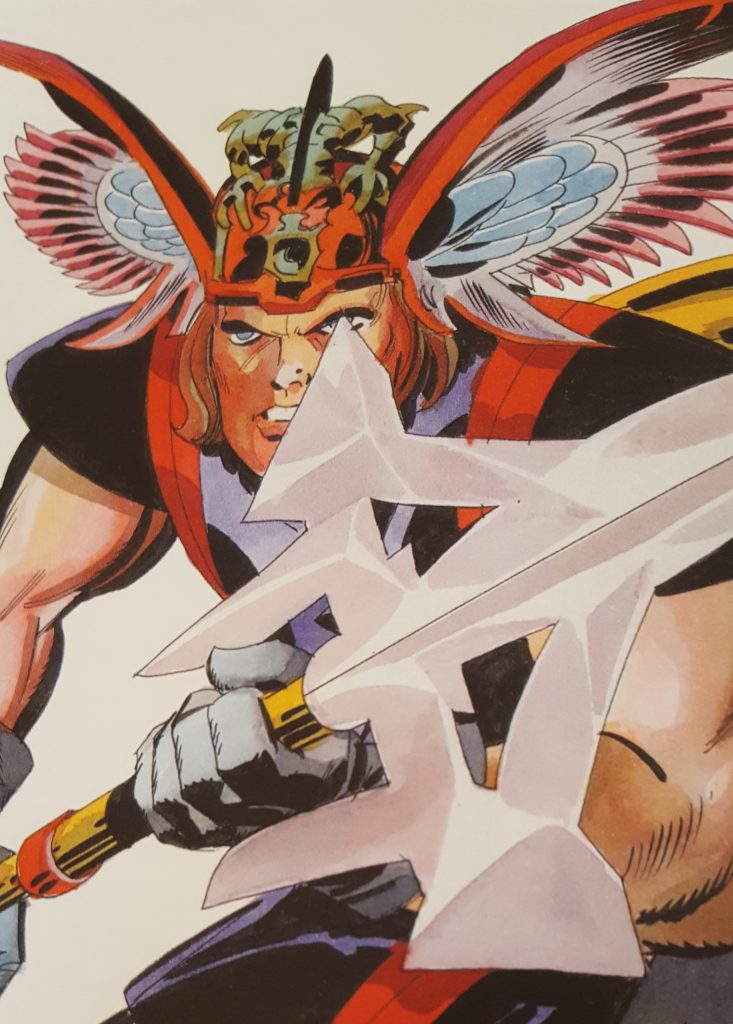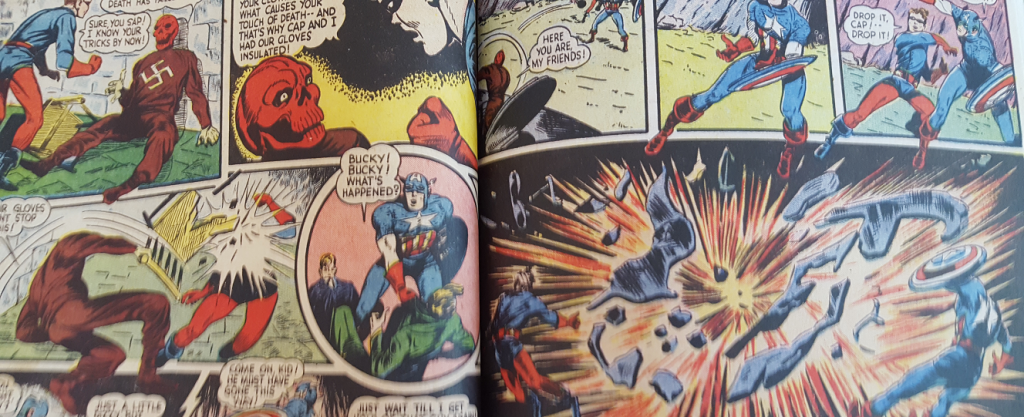The “King” of Comic Books Posted by Gary Locke on Mar 9, 2017 in Culture

If you’ve been to the movies in recent years, or even if you’ve been watching TV, you are probably aware of the popularity of comic book characters, and their influence on popular culture. Thor, Iron Man, Captain America, The Hulk and others are all figures in what is known as the Marvel universe. They are also products of the imagination of Jack “King” Kirby.
2017 marks the 100th anniversary of the birth of Jack Kirby, one of the most significant names in the history of comic books (sometimes called sequential art). As creator, or co-creator, of heroes and villains which now are household names all over the world, his impact on the medium is firmly established. However, more importantly, Kirby set the standards for the visual language of the art form.
Before Kirby, comics looked like the simple panels of newspaper comic strips. Kirby changed all that with layout and graphics that were completely unique, jumping off the page, and expanding the image.

Nobody had seen anything like it before. The fluidity of movement on the page, the action, was stunning. The panels would shift between close-ups to wide, sweeping panoramas. One panel was a horizontal rectangle, the next oval, the next a vertical rectangle which spilled out across two lower panels. He took the medium to an artistic level it had never known, and he did it almost from the first moment he entered the field.
He was born Jacob Kurtzberg, from a working-class family of Austrian immigrants living in New York. As a boy, he worked selling newspapers on street corners, but spent much of his time reading the comics, and drawing similar strips for fun. Out of school and on his own at the age of 21, and America still in the Great Depression, Jacob (or, Jack to his friends) was more concerned with making a living than with single-handedly dragging the popular media form known as funnybooks into a respected art form. But, within months of the introduction of Superman by Jerry Siegel and Joe Shuster in 1939, Kurtzberg was teamed with an imaginative writer named Joe Simon, who saw the sheer exuberance of the young artist’s work as perfectly suited to the kind of energetic story-telling that audiences were looking for. They formed a partnership which lasted for decades: Simon & Kirby.
They created lasting characters like Captain America and Captain Marvel. Their stories served as inspirational propaganda for America during World War II, as Axis powers were continually beaten by heroes fighting for freedom and liberty across the globe. Kirby himself fought in the war, and his pen and ink drawings of his time as a soldier served as a testament to those who served beside him.
Simon and Kirby hired and mentored many young talents looking to break into comic book publishing. Unfortunately, the enthusiasm for comics took a hit when the Cold War between the Eastern Bloc (Soviet) and the Western Bloc (The U.S. and NATO) was at its height. Suddenly, all of popular culture was suspect, and the politics and motives of anyone in entertainment were questioned.
Eventually, Simon and Kirby were forced to go their separate ways, just to find work. For Jack Kirby, the road took him to a fledgling publisher named Marvel, and a feisty executive editor and writer named Stanley Lieber, better known under his pen name as Stan Lee.
Lee knew Kirby’s work by reputation, and understood that anything Lee could dream up would come to life under the pen and ink of Kirby’s equally fertile imagination. As spectacular as the Simon/Kirby team was, Stan Lee and Jack Kirby took the comic book world and turned it into a sprawling universe. Beginning with their first collaboration, The Fantastic Four, comic books were reborn with an astonishing vigor and scope of vision that changed the art form yet again. Soon, Lee had dubbed Jack “The King of Comics”. The label has stayed with Kirby to this day, more than 23 years after his death.
Today, with film and television contributing to the unprecedented popularity of the characters created by Lee and Kirby, and years after Disney Corporation paid $4 Billion for ownership of Marvel Publishing and Studios, it is hard to imagine that so much of this empire owes its success to that former corner newspaper boy who loved to draw.

Build vocabulary, practice pronunciation, and more with Transparent Language Online. Available anytime, anywhere, on any device.




Comments:
Natalia:
the note is very nice and interesting… but it would be better if i could find some dates (for exomaple: in 1955…). I think it´s easier yo understand in the context.